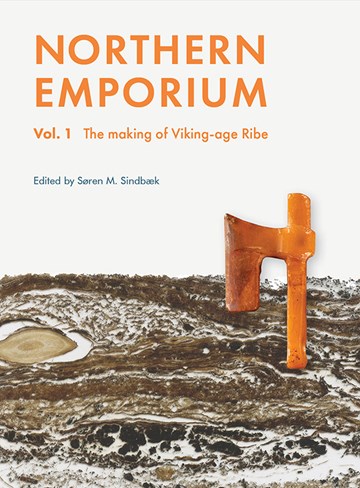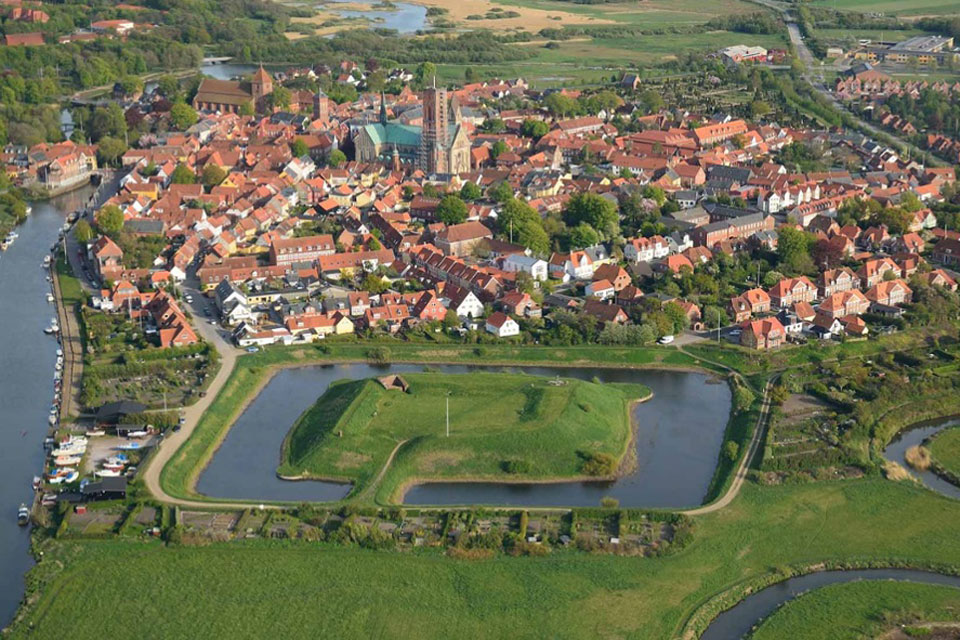New book tells the story of Viking–Age Ribe, a Northern Emporium AD 700 – 900
Northern Emporium: Vol. 1 The making of Viking-age Ribe
Ed. By Søren Sindbæk
Series: Jysk Arkæologisk Selskabs Skrifter, 1vol. 122)
Århus University Press 2022
 In the Early Middle Ages, a network of maritime trading towns – emporia – emerged along the northern coasts of Europe. From Staraya Ladoga in Russia, Truso in Poland, Birka and Åhus in Sweden, Kaupang in Norway, Ribe in Denmark, Haithabu in Germany, Dorestad and Domburg in Holland, Quentovic in Frankrig, and Hamwic, Lundenwic, Ipswic and York in England. These early urban sites are among archaeology’s most notable contributions to our knowledge of the period between the disintegration of the Western Roman Empire and the growth of a maritime-oriented world in the Viking Age, in which Ribe played a distinct role.
In the Early Middle Ages, a network of maritime trading towns – emporia – emerged along the northern coasts of Europe. From Staraya Ladoga in Russia, Truso in Poland, Birka and Åhus in Sweden, Kaupang in Norway, Ribe in Denmark, Haithabu in Germany, Dorestad and Domburg in Holland, Quentovic in Frankrig, and Hamwic, Lundenwic, Ipswic and York in England. These early urban sites are among archaeology’s most notable contributions to our knowledge of the period between the disintegration of the Western Roman Empire and the growth of a maritime-oriented world in the Viking Age, in which Ribe played a distinct role.
Ribe, on the western coast of Denmark, was one of these early urban sites. In 2017-18 the Northern Emporium Research Project conducted seminal research excavations, which provided new foundations for studying this nodal point between Western Europe, Scandinavia, and the world beyond. Although excavations had been carried out since the mid-70ties, the most recent campaign attempted to yield a more full picture of the town’s history.
Basically, these five questions were asked:
- How did Ribe emerge?
- What was the earliest phase of Ribe characterised by high-density housing?
- Who inhabited Ribe in its earliest phases?
- Which events had an impact on Ribe’s development?
- How long did Ribe survive as an emporium?
From the earliest seasonal market c. 700 to its more permanent settlement from c. 720, Ribe presents itself as a bewildering and busy trading post filled with things and materials from afar, all witnessing to far-flung and well-organised networks. One of the archaeologists’ major feats has been to minutely disentangle the stratigraphic layers and the chronological framework of these finds. With more than a 2.5-metre deep layer, the development of the settlement can be followed decade by decade. “There are few other places – if any – where we can follow the history of early North Sea trade in such detail”, writes Søren Sindbæk.
The results have enabled a minute correlation to wider Early Medieval historical trajectories. In short: this has allowed for a marked integration of the events at Ribe with the political fluctuations of the region stretching from Lake Ladoga, across the Baltic, the North Sea and into the English Channel. Fed by adopting sails and refined shipbuilding technologies, these burgeoning trading networks blossomed fully and parallel to the Viking raids and diaspora.
This first volume presents the results of these excavations and analyses to piece together the history of the emporium and its social fabric. The research employs a spectrum of novel, high-definition methods to explore the networks of the site, integrating an extensive use of geoarchaeology and 3D stratigraphic recording with intensive environmental sampling and artefact recovery, resulting in more than 100,000 artefact finds.
Already, the results have transformed our understanding of critical points in the early history of the North Sea region. Through the remains of dwellings and workshops – the traces left by traders, sailors, weavers, tailors, comb makers, and skilled producers of glass beads and metal ornaments – we are now able to follow the creation of Viking Age social networks, along with some of the most iconic artistic products of this world and the daily lives of some of its notable inhabitants.
Next volume published in 2023 will present the catalogue of the finds and explore the types of crafts, the workshops, and their organisation.
TABLE OF CONTENTS:
1 Emporia, high-definition archaeology, and Ribe 11
Søren M. Sindbæk
2 The excavation at SJM 3 Posthustorvet 25
Claus Feveile & Søren M. Sindbæk
3 Excavation atlas 49
Sarah Croix, Pieterjan Deckers, Claus Feveile, Maria Knudsen, Sarah Skytte Qvistgaard, Søren M. Sindbæk & Barbora Wouters
4 3D spatial recording and stratigraphic analysis 219
Sarah Croix
5 Soil and sediment micromorphology 239
Barbora Wouters
6 Site formation and artefact assemblages 271
Pieterjan Deckers
7 Soil geochemistry 301
Pernille L.K. Trant
8 The Emporium’s in situ preservation conditions 315 Søren M. Kristiansen & Anna K.E. Tjellden
9 Dendrochronology Oak from Ribe – A glimpse into structures from the eighth century 327
Aoife Daly
10 Radiocarbon chronology and Bayesian age model 341
Bente Philippsen & Jesper Olsen
11 Zooarchaeology 363
Jacob Kveiborg
12 Insect remains from excavations at Posthustorvet in Ribe 389
Enid Allison & Harry Kenward
13 The analysis of eighth- and ninth-century plant material from Posthustorvet 417
Peter Mose Jensen
14 The making of a northern emporium 435
Søren M. Sindbæk
READ MORE:



